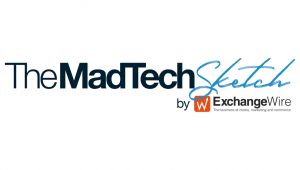RBI's Helen Clifford-Jones Talks Ad Exchanges, Yield Optimisation, Premium Inventory And The Audience Buy
by Ciaran O'Kane on 17th Nov 2009 in News
Helen Clifford-Jones is one of the most senior online sales execs in the UK, and is currently the Head of Digital Sales at RBI Digital. She took some time last week to speak to FarneyMedia about ad exchanges, ad networks, yield optimisers and the current state of the online advertising market:
It's been a difficult year for the display advertising market? Has there been an improvement in the past couple of months? Will 2010 see a return to growth?
RBI is fortunate to be in a number of markets. Trading has been tough in some but by no means all. Our biggest online display market is the professional IT market and one of our biggest brands in that market, Computerweekly.com, has had a record year. Across most markets we have seen an improvement in the last couple of months and we would expect to see that carry through to the rest of the year. Most of the Media auditing companies predict that 2010 will not see double digit growth which display had enjoyed over 2006-2008. Market sources (PWC, IAB, WPP, Aegis, etc) appear to be indicating a 4-6% growth. That said in many of our markets there is still a lot of print advertising that we would expect to see migrate online and this should help us outperform most market predictions.
There has been a lot of debate this year about non-premium and the 2nd channel. Does RBI use ad exchanges and ad networks to monetise non-premium inventory?
Currently, RBI doesn’t use ad networks to monetise remnant inventory. This is a very individual choice for publishers and will also be dependant on a variety of criteria. For instance, at what stage of development is the publisher’s proposition? Do they currently have their own online sales team or are they using 3rd party resellers. What sort of optimisation tools can be used to track and segment your users?As a B2B publisher, RBI has very defined audiences (unlike broader consumer sites/portals which have wider audience demographics) Can there really be a distinction between “high value” and “low value” inventory for more precisely targeted vertical sites? The audience and the quality of the audience remains the same in a business vertical e.g. construction or technology. As such we do not recognise that a senior business professional reading relevant content is in any way a non premium or second channel.
Do you think using yield management platforms such as AdMeld, Rubicon Project and Improve Digital, can help European publishers monetise unsold inventory?
It is a positive sign to see the market being more competitive and introducing optimisation tools. Any data which allows Publishers and media buyers to evaluate accurately and “price” inventory properly must be welcomed. However it is not a panacea for solving the problem of excess inventory in the first place. Publishers need to be transparent in their pricing policies and there are a number of challenges that are more critical. The choice of publishers to limit the white noise of advertising slots on a page that ensures that ads which do appear at the market value price point get the best chance of response?
What's your view on ad exchanges and buying platforms?
Ultimately until Publisher’s buy into these platforms, agencies and their clients will still have to approach media owners directly for inventory. Some Publishers will be more ready and willing than others. It also depends on the technology investment that Publishers are making or whether they are still reliant on print legacy systems which I suspect is still the position of many. There are still a lot of Publishers out there who do not understand cookie targeting analytics and the metrics used to monetise them. Until digital revenues reach a critical mass, a majority won’t adopt new technologies until the market forces them to do so.
What do you think needs to happen before RBI puts its premium inventory on the ad exchanges?
Currently, ad networks operate on scale and volume. There is a consensus that media buyers can purchase ad units far more cheaply on a network. This gives the view to Publishers that they are risking their premium inventory price point. Until ad exchanges can find a way of differentiating or tiering in some way this view will continue.
Do you think data exchanges, like Bluekai and Exelate, offer European publishers the opportunity to monetise user data?
This is another interesting and ethical quandary. Data protection varies between EU and non EU countries (Germany in particular has very stringent protection laws). This makes it very difficult to offer a blanket or “one size fits all” offering to monetise European user data. Until there is a clear European data protection policy, the advantages will not outweigh the disadvantages. We evaluate our clients' needs on a case by case basis. Even Murdoch's newspapers are considering not allowing any search engines to access their content because of the difference in libel laws between the US and Europe.
ROI has become even more business critical to advertisers and agencies. Do you think the “audience buy” has become more important than context and branding?
This is a huge question and one that will be debated hotly. Return on investment comes back to one question how you define “return”? It is perhaps more accurate to discuss engagement points in an advertising campaign and what is the client trying to achieve in the engagement of the prospective customer. How do the different media options (TV, Press, Display, Search, Direct Marketing etc…) work together to create an effective campaign? So in answer to the question it depends. Context and branding will always be important to those clients who have high quality goods and services to offer a discerning audience (i.e. an RBI audience). For those clients who are less concerned with these issues then volume of clicks and audience delivery will be their main criteria for buying.
Can publishers leverage their own user data (segmentation for instance) to improve the value of ad inventory?
By the very nature of the RBI offering and the verticals we operate in we already offer a high degree of segmentation and have generated over 52% of our revenues online through ad inventory and data optimisation. There are still some challenges for publishers to better understand user analytics and the user’s journey whilst they are interacting with print and online products and services. This is a continuous improvement challenge for us and other publishers.
DisplayExchangePerformancePublisherTrading








Follow ExchangeWire